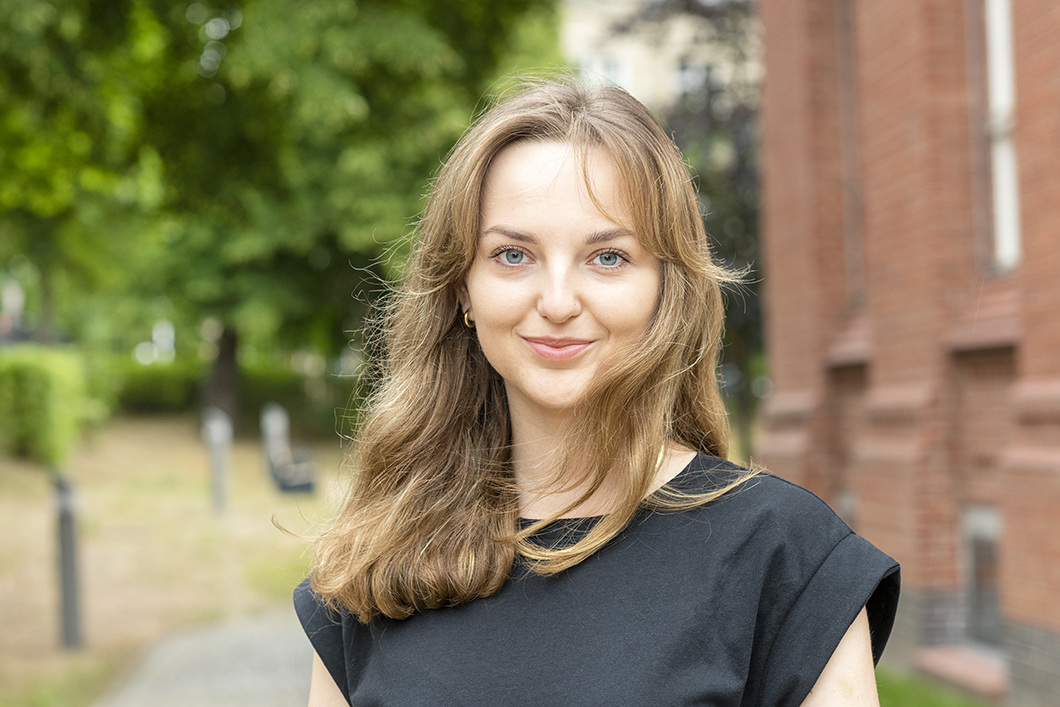
Dr. Paulina Szymoniak, Fachbereich Physik und chemische Analytik der Polymere
Quelle: BAM
Interview Serie "Kurz vorgestellt: Menschen@BAM"
Dr. Paulina Szymoniak, Fachbereich Physik und chemische Analytik der Polymere
Paulina, tell us a little bit about yourself. What did you do in "your life before BAM”?
My name is Paulina, born and raised in Szczecin, Poland, where I also completed my BSc in Nanotechnology. After that, I moved to Berlin to surround myself with inspiring, open-minded people. Here, I studied Polymer Science, which is a joint master’s program of three Berlin universities (Humboldt University, Free University, Technical University) and University of Potsdam that comprises physical, chemical, engineering, processing, and theoretical aspects. While studying I worked in a bar in the evenings, which was a very difficult but also fun job.
After completing my MSc, I started my doctoral studies at BAM where I have been involved in various projects (e.g. nanocomposites, ultra-thin films, polymers for gas separation, supramolecular materials). Currently, I am focused on searching innovative ideas for new projects that could contribute to a sustainable future. I have also been privileged to co-edit a book about dielectric spectroscopy on composite materials.
What inspired you to pursue a career in science? Do you have any role models and, if so, which ones?
Coming from a traditional household I was taught that the role of a woman is to take care of her family and the job that she acquires should not be too engaging. I was told that some occupations are meant only for men and that STEM was certainly not the one for ladies. One of my biggest motivations was to prove them wrong. Against all obstacles I have graduated from a top tier university in Germany and now I proudly hold a doctorate in soft matter physics. I hope I will set an example for the young females and encourage them to challenge the status quo in their closest surroundings.
My role models are the female pioneers in science that shaped STEM. The trailblazers that with hard work and perseverance made enormous contributions to science despite social obstacles.
What does your research focus on, and what excites you most about this topic?
The goal of my research is to understand structure-property relationships of polymer nanocomposites of industrial significance. Introducing small amounts of inorganic nanofillers to a polymer matrix results in a drastic properties improvement. The resulting material maintains the light-weight characteristic of polymers, but its mechanical properties are comparable to metals. For example, constructing aircrafts of light composite materials significantly reduced their fuel consumption. From the fundamental science perspective, I am fond of the challenging study on properties of nanocomposites that are hardly or not accessible by most experimental techniques, e.g. interfacial behaviour.
Why research at BAM? What do you like most about your work here?
BAM is an interdisciplinary institution with very competent staff. It offers endless possibilities for collaborations with people with various areas of expertise. In addition, BAM is very well-equipped when it comes to different experimental techniques. If you look hard enough you will find everything. Personally, I also like the flexibility that is offered here, where employees can organize their work according to their natural rhythms.
What do you like to do when you’re not doing research?
In my spare time I practice sport, especially yoga. It keeps my body and my mind healthy. In addition, mindfulness is an important part of my life. Physical activities and a subsequent meditation is my idea of a perfect afternoon.
If you should describe your job at BAM in one sentence – what would that be?
“Nothing is innocent, and nothing is insignificant, it's all a big endless puzzle.” O. Tokarczuk


